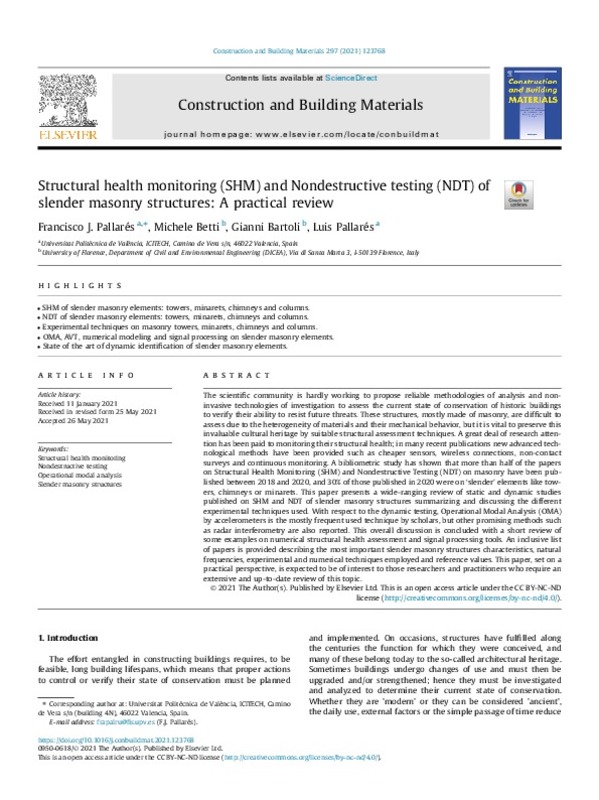JavaScript is disabled for your browser. Some features of this site may not work without it.
Buscar en RiuNet
Listar
Mi cuenta
Estadísticas
Ayuda RiuNet
Admin. UPV
Structural health monitoring (SHM) and Nondestructive testing (NDT) of slender masonry structures: A practical review
Mostrar el registro completo del ítem
Pallarés Rubio, FJ.; Betti, M.; Bartoli, G.; Pallarés Rubio, L. (2021). Structural health monitoring (SHM) and Nondestructive testing (NDT) of slender masonry structures: A practical review. Construction and Building Materials. 297:1-33. https://doi.org/10.1016/j.conbuildmat.2021.123768
Por favor, use este identificador para citar o enlazar este ítem: http://hdl.handle.net/10251/181397
Ficheros en el ítem
Metadatos del ítem
| Título: | Structural health monitoring (SHM) and Nondestructive testing (NDT) of slender masonry structures: A practical review | |
| Autor: | Betti, Michele Bartoli, Gianni | |
| Fecha difusión: |
|
|
| Resumen: |
[EN] The scientific community is hardly working to propose reliable methodologies of analysis and non-invasive technologies of investigation to assess the current state of conservation of historic buildings to verify their ...[+]
|
|
| Palabras clave: |
|
|
| Derechos de uso: | Reconocimiento - No comercial - Sin obra derivada (by-nc-nd) | |
| Fuente: |
|
|
| DOI: |
|
|
| Editorial: |
|
|
| Versión del editor: | https://doi.org/10.1016/j.conbuildmat.2021.123768 | |
| Tipo: |
|









